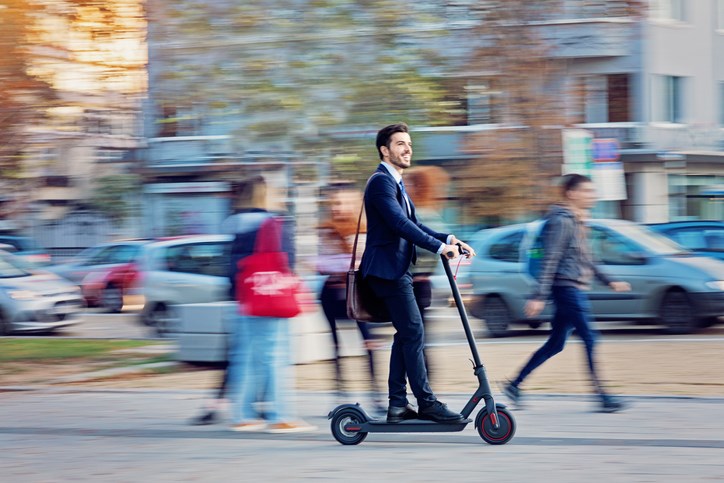
Monday Musing: Are e-scooters the future of mobility?
The latest edition of our Monday Musing Blog looks at the emerging issue of e-scooters and their place on the UK's road network.
For some, e-scooters are a sensation sweeping the nation right now. The two-wheeled electric powered scooters are available to buy online and in stores, costing between £100 and £1000. They were an extremely popular Christmas present last year and are on course to become one of the fastest-growing modes of transport in our cities, aided by rental scooters becoming legal in Great Britain, except on pavements. There is, however, just one slight problem… privately owned e-scooters remain illegal to use on UK roads.
This is no exaggeration: using a privately owned scooter on anything other than a private road with the landowner’s permission is against the law, meaning that all public roads, cycle-lanes and the pavement are off-limits. If you are caught riding your own e-scooter in this situation you are committing an offence.
So why are they illegal?
At the moment, e-scooters are classified as Personal Light Electric Vehicles, or more catchily PLEVs. Under this designation they are seen by the law as motor vehicles and are thus subject to the same legal requirements - MOT, tax, licensing, and specific construction - but because they lack a number plate, signalling ability, and often do not have visible rear lights, they can't be used legally on the roads. While the UK government plans to regulate them in a similar way to e-bikes (battery-assisted pedal cycles) in the future, at present we are in a grey area where it is currently legal to use a rented e-scooter on the road and legal to own one personally but it’s illegal to use it… you couldn’t make it up.
But the legality of e-scooters is just the beginning; there is a range of issues which impact not just on the parking and mobility community, but all of us.
So, what are the issues?
- Road safety: a number of unresolved issues remain in relation to pedestrians, cyclists and proper use of the public highway, including pavements. If e-scooters are to be permitted on the road then surely the road needs to be safe for their use? How will e-scooters and the riders be required to be visible in the dark? They are not required to have lights, unlike bikes. Reflective clothing seems essential. Guidance for e-scooter-for-hire firms was published by the Department for Transport (DfT) recommending that riders wore helmets.
- Street clutter: at a maximum allowed speed of 15 mph, e-scooters are both quick and silent, presenting a danger for the visually impaired, and a trip hazard when left on the street. Docking stations, whether on the pavement or road, have implications for pedestrians and Blue Badge holders.
- There is also the thorny issue of enforcement: scooting on pavements is likely to remain illegal and will need to be actively enforced to deter it and prevent any unnecessary accidents. Presently the police have the powers needed but lack resources. Police Community Support Officers have the power to issue fixed penalty notices for cycling on pavements but there is no clear indication that these powers will be extended to e-scooters.
There is no doubt that e-scooters will play a part in our future transport network, whether rented or privately owned. Meanwhile, the Government continues to gather evidence from trials as part of its review of micro-mobility regulations to determine whether to fully legalise e-scooters and other micro-mobility vehicles.
